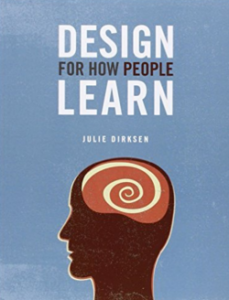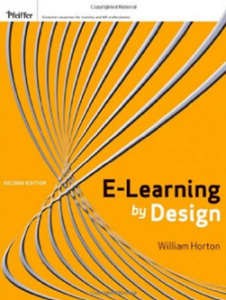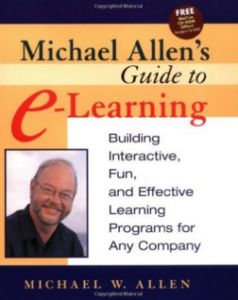Category: eLearning
-
A Team Effort: Taking ICM Coursework Virtual in Arizona
The ongoing Coronavirus pandemic exposed an interesting truth about planning and delivering educational events: we sometimes take the process for granted. Judicial educators often focus their creative talents and energies on updating and refining the training itself, while defaulting to established templates and procedures when it comes to registration, setup, and other logistics. Earlier this year, the default plan went away for the Education Services Division at the Arizona Supreme Court, so here is what we did to meet the need for leadership training. Educators and faculty involved in the Arizona ICM program tell the story through their own words.
…
On Monday, March 16th, 2020, Education Services Division staff arrived at their Arizona Supreme Court offices in midtown Phoenix to find the following email announcement: “With the CDC’s Sunday evening recommendation to cease all large and close quarters gatherings for eight weeks, we’ve canceled all programs through the end of April.”
Jennifer Curtiss, Court Administrator, Carefree-Cave Creek Consolidated Court: When the lockdowns began, I believed they would be a short-term situation and never imagined that we’d be dealing with them six months later.
Gabe Goltz, Education Programs Manager, Education Services Division, Arizona Supreme Court: I think like many people I was feeling like the proverbial “deer in the headlights.” I think I was simply grappling to understand what was going on and hadn’t yet moved into a more strategic thinking mode. Naturally, at first, it was deflating. We believe in the quality and necessity of our programming.
Jeff Schrade, Division Director, Education Services Division, Arizona Supreme Court: Throughout April and May, we were largely still in the “wait and see” mindset with rolling cancellations and postponements, making decisions about one month in advance of programs.
As it became clear that the CDC’s eight-week recommendations would not nearly be enough to stop the spread of COVID-19, cancellations continued through June.
Jennifer Curtiss: When May arrived, and it was still unsafe, things felt a lot less predictable and we came up with a new plan to utilize available technology.
Jeff Schrade: I feel that my team was patient and flexible as “wait and see” dominated in that period, but at the same time, we made great strides that allowed us to transition into “remote mode” rapidly.
Sarah Kennedy, Education Assistant, Education Services Division, Arizona Supreme Court: Our department was proactive in their approach to how we would transition our programs to a virtual world, which in turn enabled us to help courts figure out and train as efficiently and seamlessly as possible.
There was still a decision to be made about the videoconferencing platform courts would use to chart the brave new virtual world of court business. Zoom was certainly a media darling in the spring, though not all of the attention was flattering. Put another way, “Zoombombing” is on the shortlist for Merriam-Webster’s Word of the Year for 2020.
Sarah Kennedy: I heard of Zoom back in December and at the time there were clear limitations that concerned me. I was skeptical that we would be able to hold a program on Zoom that met our standards.
Gabe Goltz: I think my first impression was that this technology was cold and impersonal – a “necessary evil.”
Jeff Schrade: I thought it was just another one of about a hundred different online meeting platforms.
First impressions aside, the Arizona Supreme Court chose to acquire Zoom licenses, with an eye on deploying them across Arizona’s courts, to meet the growing need to hold training, meetings, conferences, hearings, and even trials. Staff quickly got to work on acquiring proficiency.
Sarah Kennedy: I have been pleasantly surprised by how well Zoom developers have worked to upgrade the platform to meet the incredible demands caused by the pandemic. As the entire world has moved into a virtual workspace, the Zoom infrastructure has had to catch up in a very short period.
Jennifer Curtiss: Zoom has many more tools than I realized. The ability to have break-out “rooms” is so useful for smaller conversations. I also find it very easy to use and intuitive.
Jeff Schrade: It just works. You can rely on it, and its use expands, it provides a standard platform for our diverse statewide audience – and even nationally.
The proactive Arizona team found that their national accreditor, the Institute for Court Management, responded positively to initial inquiries about the possibility of online coursework. Communication on this topic grew steadily throughout April, evolving into collaboration over what ICM coursework by videoconference would look like.
Diane Herst, Education Specialist, Education Services Division, Arizona Supreme Court: I thought, “Ok, how exactly might that happen?” I was intrigued by the idea though – thinking it might be a way to reach those whose learning styles would benefit from that format more than in-person classes.
Sarah Kennedy: I had questions like, “How we adapt the curriculum to fit into a virtual platform?” and “What tools are there currently that we can use to make this a seamless transition for our participants?”
Plans were made to unveil the virtual format in May, but another issue scuttled those plans: work demands on certified faculty. Judges, administrators, and managers, who typically dominate the faculty roster for court training, all found their availability vanish as the changing course of the pandemic altered business practice in unpredictable ways. With no faculty available, staff continued to familiarize themselves with the virtual workspace, and its unique attributes.
Diane Herst: I was never one to be away from my desk that much anyway, even in the office. I think through Zoom and Skype I may be communicating even more with my colleagues. I haven’t felt isolated at all!
Gabe Goltz: I have found that lengthy Zoom-based meetings or classes seem to leave me more exhausted than in-person. I’ve found this strange since, when I teach, I tend to be very animated and move a lot.
Sarah Kennedy: It is interesting to note though that we also tend to see a more casual side come out as well, such as if participants are learning from home, we hear their dogs barking in the background or children will pop up on the screen for a quick second. It brings some levity and to a degree lowers the amount of stress and strangely brings us all closer together.
Jennifer Curtiss: I was constantly worried that other people were watching me, even though they probably weren’t doing so. It feels like you’re being watched much more than during an in-person class.
Jeff Schrade: The Brady Bunch view is so 1970s!
Veteran faculty with specific availability were soon lined up for Purposes and Responsibilities of Courts in early July: Gabe Goltz and Kent Batty, former Court Administrator for the Arizona Superior Court in Pima County. Preparations began in May, and heated up in June, matching the record-breaking heat Phoenix would experience all summer.
Diane Herst: I think the issue of knowing the “Zoom equivalent” to our in-class procedures was the most challenging. For instance, how would the flip-chart / group exercises take place?
Sarah Kennedy: While we have great faculty that are extremely knowledgeable in their respective areas of training, it is a completely different world to teach virtually rather than face-to-face.
Gabe Goltz: We wanted to ensure that a good classroom community, or collegial meeting environment, could still be built and maintained in an otherwise sterile and tech-mediated environment.
The night before the class began, tensions were high.
Diane Herst: I didn’t sleep that much different than the night before any class!
Sarah Kennedy: I slept just fine. There is always a little bit of nervousness that comes with each program that is taught, but it was minimal for this class because this wasn’t my first class. Our team devoted weeks of prep for this class as well so we all felt confident coming into this.
Gabe Goltz: While I am always anxious right before a class starts, I don’t think at that point I was especially more anxious for it being on Zoom.
Jennifer Curtiss: I didn’t have any trouble sleeping.
[Ed. Note: The author has been advised to avoid caffeine after noon. ;)]
Over four days, Arizona faculty, staff, and participants completed their first virtual session over Zoom. Most everyone in the “room” remarked that the course took a similar trajectory to most ICM coursework: transitions between lecture and discussion started very formally, and as the faculty and participants become comfortable with their new learning cohort, the lesson plan flows seamlessly from topic to topic, with critical thinking and problem solving arising organically.
Diane Herst: I think at the beginning, the participants were a little apprehensive, but by Day 2, they all had it down well! As far as participation within the class, it didn’t seem that much different than if we were in the same room.
Sarah Kennedy: There was a noticeable amount of growth throughout the four days of instruction. We held participant preparation sessions before class to make sure that there were minimal distractions and that their computer setup would accommodate what was required of them. Our team has taken the position of being proactive whenever it is possible so that we don’t have to be reactive during a session. It has paid off and has created an environment for participants that is much more conducive for learning and effective for faculty.
Gabe Goltz: I did see participants get increasingly comfortable and quick with Zoom tools.
Jennifer Curtiss: As we all became more comfortable with Zoom, and the online format of the class, I think we were more relaxed and better able to have conversations because we knew what to expect. Knowing what to expect also helped us with activities and breakout “rooms” because we were familiar with the process. The real-life challenges that come with working from home and taking classes via Zoom helped generate rapport between faculty and participants.
Once the faculty teach-back was completed on Friday afternoon, and Jennifer Curtiss was confirmed as the newest member of Arizona’s ICM faculty, there was a genuine sense of accomplishment in the team, confirmed later by the evaluation scores.
Sarah Kennedy: I was pleasantly surprised by the feedback. I knew that we had not failed in any of the areas of evaluation and that our team and faculty worked hard to make sure that everything ran smoothly. There was a huge amount of praise and recognition from participants regarding how seamless the class seemed and that they felt engaged the whole time.
Jeff Schrade: Participants unsurprisingly enjoyed the schedule flexibility and those that live in distant corners of the state appreciated not having to travel and spend time away from home.
Gabe Goltz: I think it’s indispensable to have a good team of staff who are in the Zoom class to help participants with whatever they need and to otherwise manage the technology. I just don’t think it’s possible to do this work effectively while also being a great instructor, focused on the instruction.
Diane Herst: We have conducted one more class since and will be conducting our third in a couple of weeks. It has gotten easier as we have been able to find what works and what doesn’t, and then make modifications for the next time.
Echoing Diane’s words, though the journey has been full of fits and starts, we are getting better every day. In the words of Mark Twain, “continuous improvement is better than delayed perfection.” Arizona has since completed two more ICM courses: Workforce Management, and Operations Management. Both received strong evaluation scores and feedback. We look forward to offering virtual ICM coursework until in-person coursework is possible, and perhaps indefinitely as an alternative for Arizona participants who live and work several hours from Phoenix.
…
About the Author: Matt Estes is a Senior Education Specialist with the Education Services Division of the Arizona Supreme Court. In that role, he leads the work of the Court Leadership Institute of Arizona. He is also a NASJE member and is happy to discuss the logistics and preparation behind virtual coursework. Contact Matt at mestes@courts.az.gov.
-
Midwest Region Webinar Available to NASJE Membership
Please join members of the Midwest Region at a timely Webinar to be held on July 27 from noon to 1:30 Central Time.
Taking the Lead: Responding to Harassment in the Workplace
As you know, the #MeToo movement has generated a lot of attention on sexual harassment in the workplace. In addition, some high-profile disclosures regarding judges sexually harassing subordinates have increased attention to sexual harassment within organizations that support the educational needs of judges. Many of us have reviewed, revised, or revamped sexual harassment training efforts for judges and court staff. The conference in Austin features a session about what works and what does not work in terms of sexual harassment training. At the end of the day, none of us want to make the problem worse; we are trying to do what we can to make it better.
This webinar continues along the path of how to do sexual harassment training in a way that helps solve the problem. In this session, we will look at the intersection of race and sex, considering how training efforts may be missing some of the critical elements to make them effective.
Join our faculty, Dr. Anthony Simones, Director of Citizenship Education, Missouri Bar (moderator), Kimberly Carson, Judicial Education Specialist for the Iowa AOC, and Jennifer Juhler, Director of Education and Training for the Iowa AOC. Dr. Simones has graciously agreed to moderate a discussion of these issues with Kim and Jennifer who have considerable experience training on fairness issues and who spend a significant amount of time talking with each other about fairness issues in general, race and sex specifically.
-
NASJE Midwest Region Webinar: Using Technology to Train Rural Courts
We are pleased to announce our NASJE Midwest Region Webinar: Using Technology to Train Rural Courts.
The webinar will be conducted on April 7, 2017 from 11:45 a.m. to 1:30 p.m. Central Time.
Open to all NASJE members. Every state has felt the pain of smaller budgets and fewer resources. Judicial education departments across the country have been tasked with providing more training despite shrinking budgets. In states like Missouri, the rural courts rely completely on the Office of State Court Administrator for their training and education. For almost 20 years, Missouri has used a blended learning approach, utilizing traditional classroom training, instructor led webinars, and e-learning to meet this challenge and ensure that the rural courts get the same quality training as the larger metropolitan courts.
Join us to learn about how Missouri has stepped up to the demands or providing quality education to all staff despite geography.
Faculty: Chris Adams has been with the Missouri Office of State Courts Administrator and worked in Judicial Education since 1999. He has been part of the Educational Technology team since its inception in 2001 and has been the Ed Tech Coordinator since 2010. Mr. Adams has a bachelor’s degree in criminal justice and a master’s degree in business administration. He is also a certified instructional designer and has more than 20 years of experience as a law enforcement officer working for city, county, and state agencies.
-
Design for How People Learn
 Design for How People Learn (Voices that Matter) by Julie Dirksen (2011)
Design for How People Learn (Voices that Matter) by Julie Dirksen (2011)
Get it at AMAZONIn Design For How People Learn, you’ll discover how to use the key principles behind learning, memory, and attention to create materials that enable your audience to both gain and retain the knowledge and skills you’re sharing. Using accessible visual metaphors and concrete methods and examples, Design For How People Learn will teach you how to leverage the fundamental concepts of instructional design both to improve your own learning and to engage your audience.
-
E-Learning by Design
 E-Learning by Design by William Horton (2011)
E-Learning by Design by William Horton (2011)
Get it at AMAZONE-Learning by Design offers a comprehensive look at the concepts and processes of developing, creating, and implementing a successful e-learning program. This practical, down-to-earth resource is filled with clear information and instruction without over simplification. The book helps instructors build customized e-learning programs from scratch—building on core principles of instructional design to: develop meaningful activities and lessons; create and administer online tests and assessments; design learning games and simulations; and implement an individualized program.
-
Michael Allen’s Guide to e-Learning: Building Interactive, Fun, and Effective Learning Programs for Any Company
 Michael Allen’s Guide to e-Learning: Building Interactive, Fun, and Effective Learning Programs for Any Company by Michael Allen
Michael Allen’s Guide to e-Learning: Building Interactive, Fun, and Effective Learning Programs for Any Company by Michael Allen
Get it at AMAZONThis book presents best practices for building interactive, fun, and effective online learning programs. This engaging text offers insight regarding what makes great e-learning, particularly from the perspectives of motivation and interactivity, and features history lessons that assist you in avoiding common pitfalls and guide you in the direction of e-learning success.